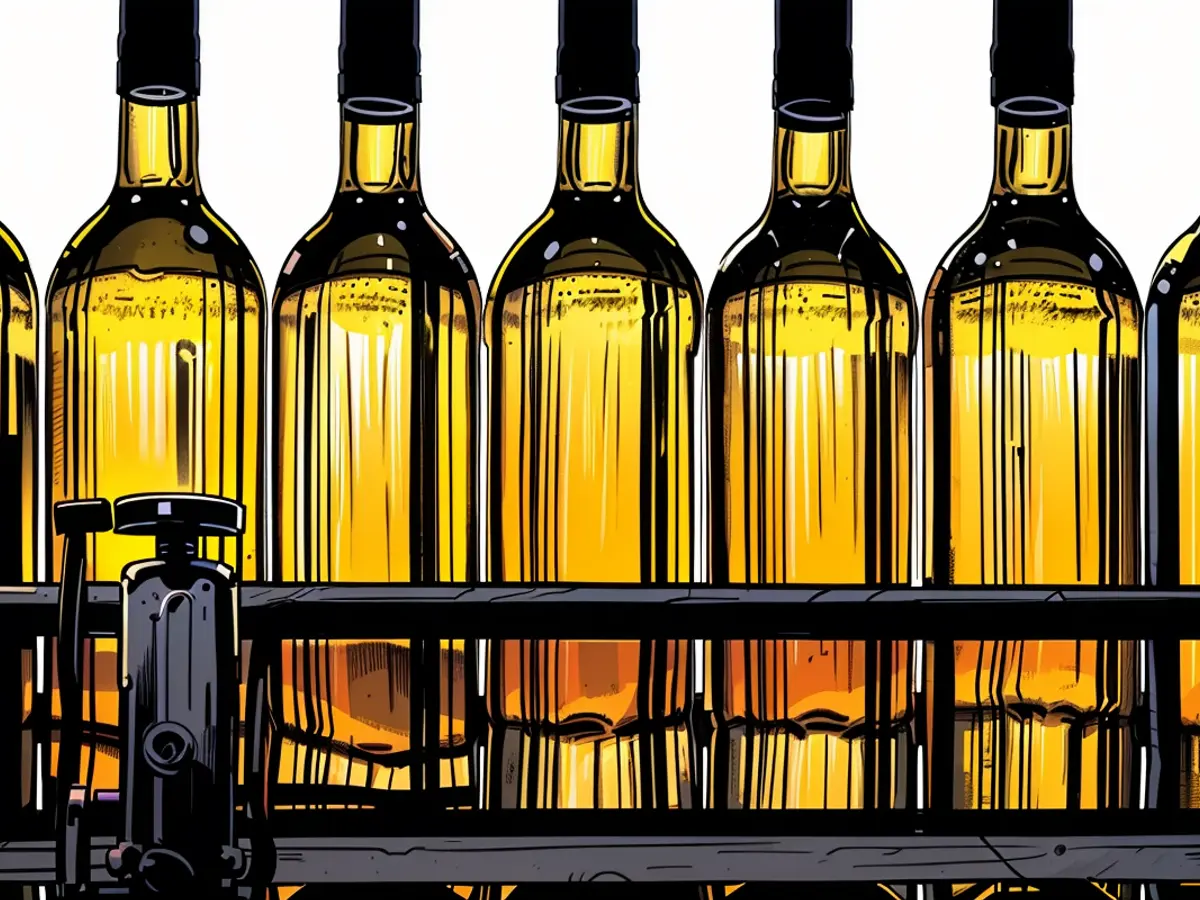- Wine requires updated labels: Enhanced disclosure of ingredients
Wine Nutrition Labels: A New Regulation Coming in 2024
Beginning in 2024, wine producers will need to comply with updated nutrition labeling requirements, which will also impact Federweißer, currently in harvest. The wine industry, especially sparkling wine producers, have generally had positive experiences with the new EU labeling regulations and digital labeling, according to their own statements.
Many winemakers are currently grappling with these changes before producing the next vintage, with many unanswered questions, as reported by Christian Schwörer, General Secretary of the German Winegrowers' Association.
From 2025, consumers will start seeing these labels on wine bottles in stores due to a EU legal amendment that requires nutrition information on wine. The energy value and any potential allergens such as sulfites must be stated on the label, states Ernst Büscher from the German Wine Institute in Bodenheim, Rhineland-Palatinate.
Additional nutrients and the ingredients list can be accessed via a QR code on the label, leading to a website where the data is stored. This so-called E-label is maintained for the entire lifespan of a wine.
Federweißer leads the way in wine nutrition
"Federweißer has certain nutritional peculiarities, as it is sold in an unfermented or partially fermented state," explains Büscher. The nutritional information refers to the time before fermentation begins, while the maximum alcohol content is indicated, which would arise after full fermentation.
However, many winemakers in the Association of German Prädikat Wine Estates (VDP) do not see a benefit for consumers in the labels, especially for dry white wines, whose nutrition information is so similar that it hardly makes sense to list individual wines, according to Max Rieser from VDP.
Costs are also a concern for some producers. A large VDP operation estimates an additional 6,000 euros per year for software, for example. Another criticism is the appearance of the labels.
However, the QR code solution is widely welcomed because it saves space on the label. Some producers have already implemented such codes on their bottles and only need to add new information, states Rieser.
Sparkling wine cellars desire an "i" on the bottle
The new regulation offers a modern and transparent solution for consumers, praises Alexander Tacer, Managing Director of the Association of German Sparkling Wine Cellars and the Federation of Wine and Spirits International. "EU-wide, the label has further advantages: The information can be conveniently displayed via the QR code in the respective target market's local language, without cluttering the physical label with text." However, the industry is still debating how the QR code should be labeled. "Manufacturers would prefer a language-neutral 'i' instead of an additional textual hint."
The Commission will oversee the implementation of the EU legal amendment, ensuring wine producers comply with the nutrition labeling requirements from 2025. Despite the initial challenges, the German Winegrowers' Association and German Wine Institute agree that the QR code solution is beneficial for label space and consumer convenience.








